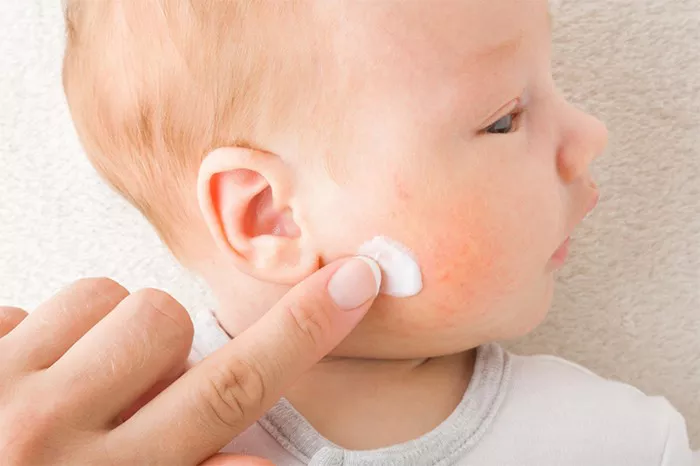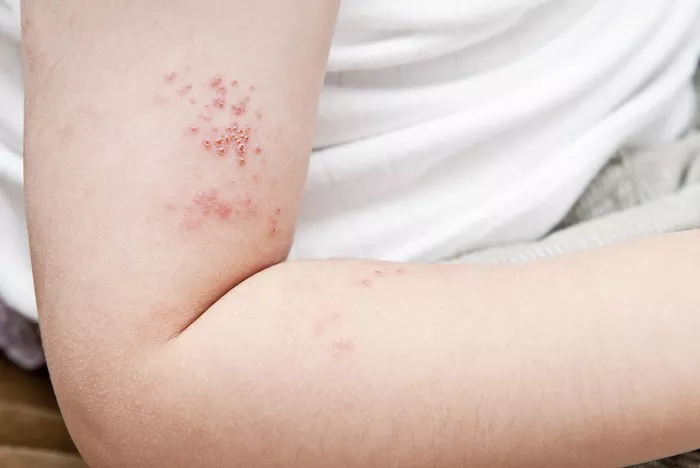Ringworm is a common fungal infection that affects the skin, hair, and nails. Despite its name, ringworm is not caused by a worm but by a fungus known as dermatophyte. The infection is highly contagious and can be spread through direct contact with an infected person or animal, or by coming into contact with contaminated surfaces. The rash caused by ringworm typically appears as a red, circular, and itchy patch with clear skin in the middle, resembling a ring. In this article, we will explore the best treatments and what to put on a ringworm rash to help it heal effectively.
Understanding Ringworm Rash
A ringworm rash occurs when the fungus infects the outer layer of your skin. The fungal spores invade the skin, causing inflammation and the characteristic ring-shaped rash. Ringworm can affect various parts of the body, including the scalp, feet (athlete’s foot), groin (jock itch), and nails, though it most commonly appears on the body.
The symptoms of a ringworm rash can include:
- Circular or ring-shaped red patches
- Itching or burning sensations
- Scaly or cracked skin
- Raised edges with a clear center
If left untreated, ringworm can spread to other parts of the body and cause more severe symptoms. Fortunately, the infection is usually treatable with the right medications and self-care.
Over-the-Counter Antifungal Creams
The most effective treatment for ringworm is antifungal medication. There are many over-the-counter antifungal creams, powders, and sprays that can help treat the infection. These products contain antifungal agents such as clotrimazole, miconazole, terbinafine, or ketoconazole, which target the fungus and stop it from growing.
Here are some common over-the-counter antifungal treatments:
Clotrimazole (Lotrimin) Clotrimazole is a widely used antifungal cream that can help treat ringworm. Apply a thin layer of the cream to the affected area twice daily, ensuring the rash is covered completely. You may need to use it for up to four weeks to fully eliminate the fungus.
Miconazole (Monistat) Miconazole is another effective antifungal treatment. It is often used for fungal skin infections like athlete’s foot and jock itch. Apply miconazole cream to the infected area once or twice a day, depending on the product instructions.
Terbinafine (Lamisil) Terbinafine is a popular antifungal cream for treating ringworm. It works by disrupting the cell membranes of the fungi. Apply terbinafine to the affected skin once or twice a day until the rash clears up. This medication is usually faster-acting than other antifungal creams.
Ketoconazole (Nizoral) Ketoconazole is available in both topical and oral forms. The topical cream is highly effective against fungal infections. Apply it directly to the affected area once a day. If the rash persists, you may need to visit a healthcare provider for further treatment.
Prescription Antifungal Medications
If the over-the-counter antifungal treatments do not provide relief, your doctor may prescribe a stronger antifungal medication. Prescription options may include:
Oral antifungal medications: These are typically used for more severe or widespread cases of ringworm. Common oral medications include terbinafine, itraconazole, and fluconazole. These medications are effective at clearing up the infection from the inside out. Your doctor will determine the appropriate dosage and duration based on the severity of the infection.
Prescription-strength creams: If topical antifungals are required but the over-the-counter versions are ineffective, your doctor may prescribe stronger creams containing ingredients like ketoconazole or ciclopirox.
Keeping the Area Clean and Dry
In addition to antifungal treatments, it is essential to keep the infected area clean and dry. Fungi thrive in moist, warm environments, so it is important to take measures to prevent further growth and spread.
Clean the affected area: Wash the affected area gently with soap and water. Avoid scrubbing or using harsh chemicals, as this can irritate the skin further. Pat the area dry with a clean towel.
Dry the area thoroughly: After cleaning, make sure the area is completely dry. You can use a clean, soft towel or a blow dryer on a cool setting to dry the skin. Pay special attention to the skin folds where moisture can accumulate, such as the groin, underarms, or between toes.
Avoid tight clothing: Wearing tight or restrictive clothing can trap moisture and make it easier for the fungi to spread. Opt for loose-fitting clothing made of breathable fabrics like cotton, which allow air circulation.
Antifungal Powders
In addition to creams, antifungal powders can be effective for treating ringworm, especially in areas prone to moisture, like the feet and groin. These powders help keep the skin dry and provide a layer of protection against further fungal growth. They can be used in conjunction with creams or as a preventive measure.
When using antifungal powders:
- Dust the powder lightly onto the affected area after applying cream, or use it on its own if you prefer a powder-only approach.
- Make sure to apply the powder to areas where the fungus may spread, such as the feet, groin, or underarms.
- Reapply the powder after showering or bathing to maintain dryness.
Home Remedies for Ringworm
In addition to medical treatments, some people prefer to try natural or home remedies to alleviate the symptoms of ringworm. While these methods may provide relief, they should be used alongside medical treatments for the best results.
Tea tree oil: Tea tree oil has antifungal properties and can help kill the fungus causing ringworm. Dilute a few drops of tea tree oil with a carrier oil like coconut oil and apply it to the affected area. Be sure to perform a patch test first to ensure you are not allergic to tea tree oil.
Apple cider vinegar: Apple cider vinegar is known for its antibacterial and antifungal properties. Dilute apple cider vinegar with water and apply it to the rash using a cotton ball. This may help reduce the inflammation and irritation caused by ringworm.
Garlic: Garlic has natural antifungal compounds, and some people use it as a home remedy for ringworm. Crush a few garlic cloves and apply the paste directly to the affected area for about 20 minutes. Rinse off with water and repeat this process daily.
Coconut oil: Coconut oil contains lauric acid, which has antifungal effects. Applying coconut oil to the ringworm rash may help soothe the skin and reduce fungal growth. It can be used alongside other antifungal treatments for added relief.
Preventing Ringworm from Spreading
Once you start treating ringworm, it’s essential to take steps to prevent it from spreading to other parts of your body or to other people. Ringworm is highly contagious, and proper hygiene is key to managing the infection.
Wash your hands frequently: Always wash your hands thoroughly after touching the affected area. This will help prevent the fungus from spreading to other parts of your body or to others.
Avoid scratching: Scratching the rash can cause the fungus to spread to other areas of the body. Try not to touch or scratch the rash, and keep it covered with a clean bandage if necessary.
Disinfect your belongings: Ringworm can live on surfaces, so it is essential to disinfect personal items such as towels, bedding, and clothing. Wash these items in hot water and dry them thoroughly to kill any fungal spores.
Use separate towels: If you are sharing a bathroom, make sure to use separate towels, washcloths, and clothing to avoid cross-contamination.
When to See a Doctor
While most cases of ringworm can be treated effectively with over-the-counter antifungal creams, you should see a doctor if:
- The infection spreads or does not improve after using antifungal treatments for two weeks.
- The rash becomes increasingly red, swollen, or painful.
- You develop a fever or other signs of infection, such as pus or discharge.
- You experience ringworm on your scalp, nails, or other sensitive areas of the body.
A healthcare provider can offer a more targeted treatment plan, such as stronger prescription medications or oral antifungal drugs, to address the infection more effectively.
Conclusion
Ringworm is a treatable condition, and with the right care and treatment, the rash will usually clear up in a few weeks. The most important step in treating ringworm is applying antifungal medication, whether it is over-the-counter or prescribed by a doctor. In addition, maintaining good hygiene, keeping the infected area dry, and following the instructions for your treatment will help speed up recovery and prevent the infection from spreading. Always consult a healthcare provider if the infection persists or worsens.
Related topics:
- Does Ringworm Expand When Healing?
- Does Ringworm Scab Over When It Is Healing?
- Is Ringworm Itchy When It’s Healing?

























